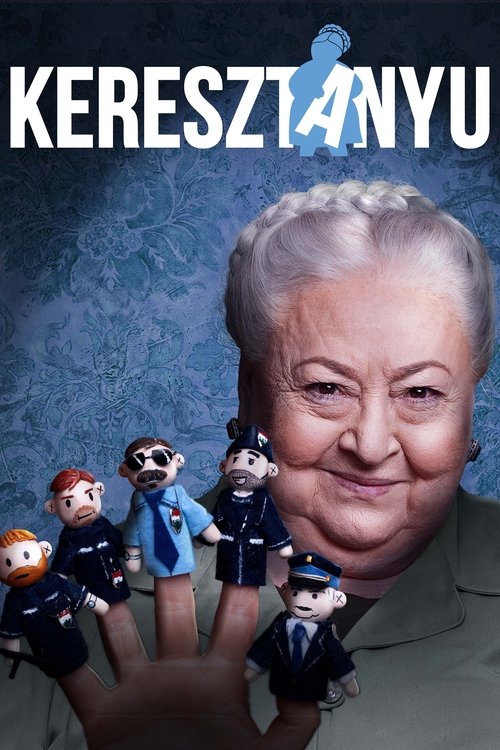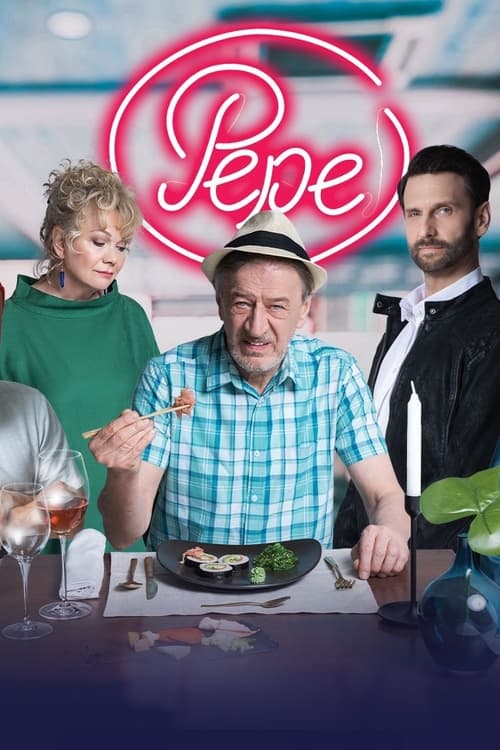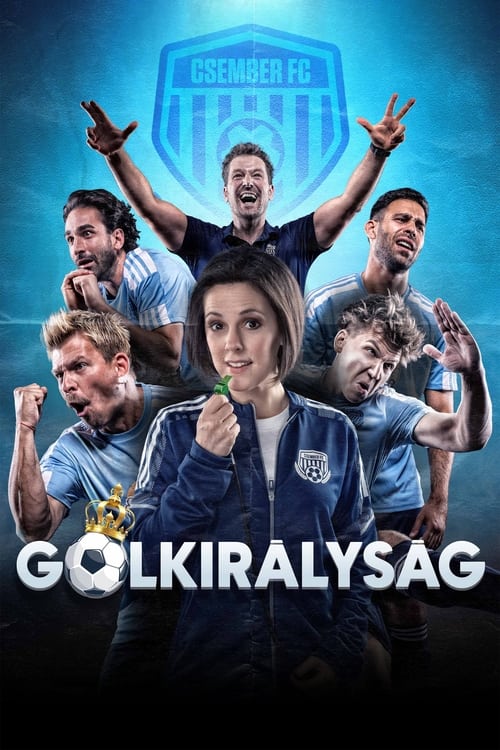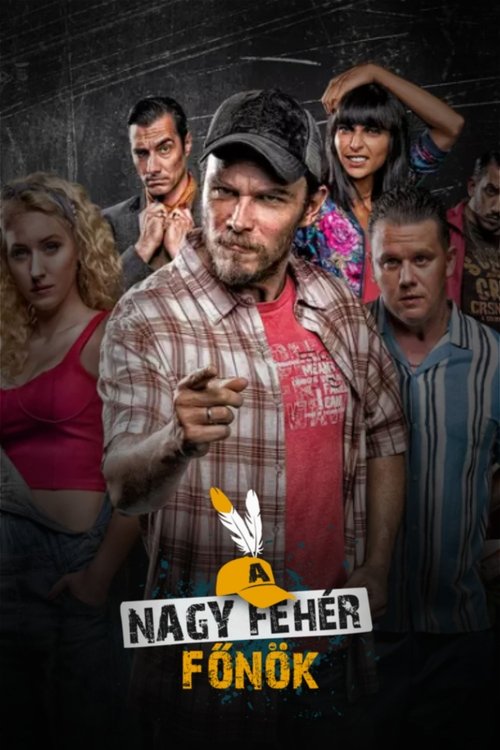
Ask Your Own Question
What is the plot?
In Episode 4 of "A Séf meg a többiek," the episode opens with the kitchen staff at the restaurant bustling with energy as they prepare for a high-stakes dinner service. The head chef, who is known for his strict demeanor, is particularly anxious about the evening, as a food critic is expected to attend. The atmosphere is tense, with each team member feeling the pressure to perform flawlessly.
As the service begins, the camera focuses on the sous-chef, who is struggling with a new dish that the head chef has insisted on featuring. The sous-chef's internal conflict is palpable; he feels both the weight of his mentor's expectations and his own desire to prove himself. He attempts to follow the head chef's instructions meticulously but is visibly stressed, leading to a few minor mistakes that do not go unnoticed.
Meanwhile, the front-of-house staff is also on edge. The restaurant manager is seen briefing the waitstaff about the importance of impeccable service for the critic's visit. The manager emphasizes the need for teamwork and communication, highlighting the stakes of the evening. The tension escalates as the first few tables are served, and the waitstaff begins to receive feedback from the diners.
As the night progresses, the critic arrives, and the head chef's anxiety peaks. He watches closely as the critic samples the first dish, a beautifully plated seafood entrée. The critic's expression is inscrutable, leaving the kitchen staff in suspense. The sous-chef, feeling the pressure, decides to take a risk and adds a personal touch to the next dish, hoping to impress both the chef and the critic.
However, this decision backfires when the head chef discovers the alteration. He confronts the sous-chef in a heated exchange, expressing his disappointment and frustration. The sous-chef, feeling cornered, defends his choice, arguing that creativity is essential in the culinary world. This confrontation serves as a pivotal moment, showcasing the clash between tradition and innovation within the kitchen.
As the service continues, the critic's feedback becomes more critical. He sends back a dish, citing it as underseasoned. The head chef's temper flares, and he lashes out at the kitchen staff, creating a hostile environment. The sous-chef, feeling demoralized, contemplates quitting but is encouraged by a fellow cook who reminds him of his passion for cooking.
In a surprising turn, the sous-chef decides to take a stand. He approaches the head chef and suggests a collaborative approach to the remaining dishes, proposing that they work together to salvage the evening. The head chef, initially resistant, begins to see the value in the sous-chef's perspective and reluctantly agrees to collaborate.
The final sequence of the episode showcases the kitchen working in unison, with the head chef and sous-chef leading the team. They create a series of dishes that reflect both the chef's expertise and the sous-chef's creativity. The critic is served these new dishes, and his demeanor shifts from critical to impressed. The episode culminates in a moment of relief as the critic leaves the restaurant, hinting at a positive review.
As the staff celebrates the successful turnaround, the head chef acknowledges the sous-chef's contributions, marking a significant shift in their relationship. The episode closes with a sense of camaraderie among the kitchen staff, setting the stage for future challenges and growth within the team.
What is the ending?
In the ending of "A Séf meg a többiek," season 1, episode 4, the tension reaches a climax as the characters confront their personal and professional conflicts. The episode concludes with a dramatic showdown in the kitchen, where the main characters must decide whether to work together or let their differences tear them apart. Ultimately, they find a way to collaborate, leading to a moment of unity and understanding among them.
As the episode unfolds, the scene opens in the bustling kitchen of the restaurant, where the atmosphere is thick with tension. The head chef, visibly stressed, paces back and forth, barking orders at the staff. The camera captures the sweat glistening on their foreheads, the clattering of pots and pans, and the frantic chopping of vegetables. Each character is shown grappling with their own insecurities and frustrations, which are palpable in the air.
In a pivotal moment, one of the sous chefs, feeling undervalued, lashes out at the head chef, accusing him of favoritism. The argument escalates, voices rising above the din of the kitchen. The camera zooms in on the head chef's face, revealing a mix of anger and hurt. He struggles to maintain control, but the cracks in his authority are beginning to show. The sous chef storms out, leaving a heavy silence in his wake.
As the episode progresses, the remaining staff members are left to pick up the pieces. They exchange worried glances, unsure of how to proceed without the sous chef. The head chef, realizing the impact of his leadership style, begins to reflect on his approach. He watches the remaining team members work in silence, their camaraderie strained but still present.
In a moment of vulnerability, the head chef gathers the remaining staff for a meeting. He acknowledges his mistakes and expresses a desire to foster a more supportive environment. The camera captures the hesitant nods of the team, their expressions softening as they begin to see a glimmer of hope for collaboration.
The climax of the episode occurs during a high-pressure dinner service. The kitchen is chaotic, orders piling up, and the tension is palpable. Just when it seems like everything might fall apart, the sous chef returns, having had a moment of reflection. He steps back into the fray, and the team rallies together, each member playing to their strengths. The camera captures the synchronized movements of the team, a dance of cooperation that transforms the chaos into a well-oiled machine.
As the dinner service concludes, the team stands together, exhausted but triumphant. They share a moment of laughter, the weight of their earlier conflicts lifting. The head chef looks around at his team, pride swelling in his chest. The sous chef, now back in the fold, shares a knowing smile with him, signaling a newfound respect and understanding.
The episode ends with the team cleaning up the kitchen, their camaraderie restored. The head chef reflects on the importance of teamwork and communication, while the sous chef feels a renewed sense of belonging. Each character has faced their internal struggles and emerged stronger, setting the stage for future challenges and growth.
In summary, the episode concludes with a sense of unity among the characters, highlighting the importance of collaboration and understanding in overcoming personal and professional conflicts. The head chef and sous chef, once at odds, find common ground, while the rest of the team learns to support one another, paving the way for a more harmonious working environment.
Is there a post-credit scene?
In "Episode 4" of "A Séf meg a többiek," there is indeed a post-credit scene that adds a humorous twist to the episode's events. After the credits roll, the scene opens in the bustling kitchen of the restaurant, where the staff is cleaning up after a chaotic dinner service. The camera focuses on the head chef, who is visibly exhausted but still trying to maintain a sense of authority.
As the staff members joke and laugh about the mishaps of the night, the chef suddenly receives a phone call. The tension in the room shifts as everyone quiets down, curious about the conversation. The chef's expression changes from fatigue to confusion, and then to disbelief. He starts to pace, gesturing animatedly as he speaks, clearly frustrated by what he is hearing.
The scene cuts to a close-up of the chef's face, revealing a mix of annoyance and amusement as he learns that a famous food critic is unexpectedly coming to the restaurant the following day. The staff, overhearing bits of the conversation, begins to panic, scrambling to prepare for the critic's visit. The chef, realizing the pressure is on, tries to rally the team, but his attempts are met with a mix of enthusiasm and comedic chaos as everyone rushes around, bumping into each other and dropping utensils.
The post-credit scene ends with the chef standing in the middle of the chaos, shaking his head with a wry smile, muttering to himself about the unpredictability of the restaurant business. This moment encapsulates the show's blend of humor and the high-stakes environment of culinary arts, leaving viewers with a light-hearted cliffhanger that hints at the challenges to come in the next episode.
What challenges does the main character face in Episode 4?
In Episode 4, the main character, a passionate chef, faces the challenge of preparing a complex dish that requires both technical skill and creativity. The pressure mounts as they must impress a renowned food critic who is known for being particularly harsh.
How does the episode explore the theme of teamwork among the kitchen staff?
Episode 4 delves into the theme of teamwork as the kitchen staff must come together to support the chef during the high-pressure dinner service. Tensions rise, but moments of collaboration and camaraderie highlight the importance of unity in overcoming challenges.
How does the relationship between the chef and the sous-chef evolve in this episode?
Throughout Episode 4, the relationship between the chef and the sous-chef becomes strained as they clash over differing culinary philosophies. The sous-chef feels undervalued and begins to question their loyalty, leading to a pivotal moment where they must either reconcile or risk a permanent rift.
What specific dish does the chef attempt to create in this episode, and what obstacles do they encounter?
In Episode 4, the chef attempts to create a sophisticated seafood dish that requires precise timing and fresh ingredients. They encounter obstacles such as a last-minute ingredient shortage and a kitchen mishap that threatens to derail their entire preparation.
What role does the food critic play in the events of Episode 4?
The food critic serves as a catalyst for tension in Episode 4. Their arrival at the restaurant creates an atmosphere of anxiety among the staff, and their feedback becomes a focal point for the chef's internal struggle, pushing them to confront their insecurities and strive for excellence.
Is this family friendly?
In "Episode 4" of "A Séf meg a többiek," there are a few elements that may be considered potentially objectionable or upsetting for children or sensitive viewers.
-
Emotional Tension: The episode features scenes of conflict and emotional distress among characters, which may be intense for younger viewers. The characters grapple with personal issues that lead to heightened emotions.
-
Culinary Competition Pressure: The competitive nature of the cooking challenges can create a stressful atmosphere, showcasing moments of frustration and disappointment that might be overwhelming for some.
-
Mild Language: There are instances of mild language used during heated moments, which may not be suitable for all audiences.
-
Themes of Failure: Characters face setbacks and failures in their culinary endeavors, which could resonate negatively with sensitive viewers who may struggle with themes of inadequacy or disappointment.
Overall, while the episode does not contain explicit content, the emotional and competitive dynamics may require parental guidance for younger audiences.































